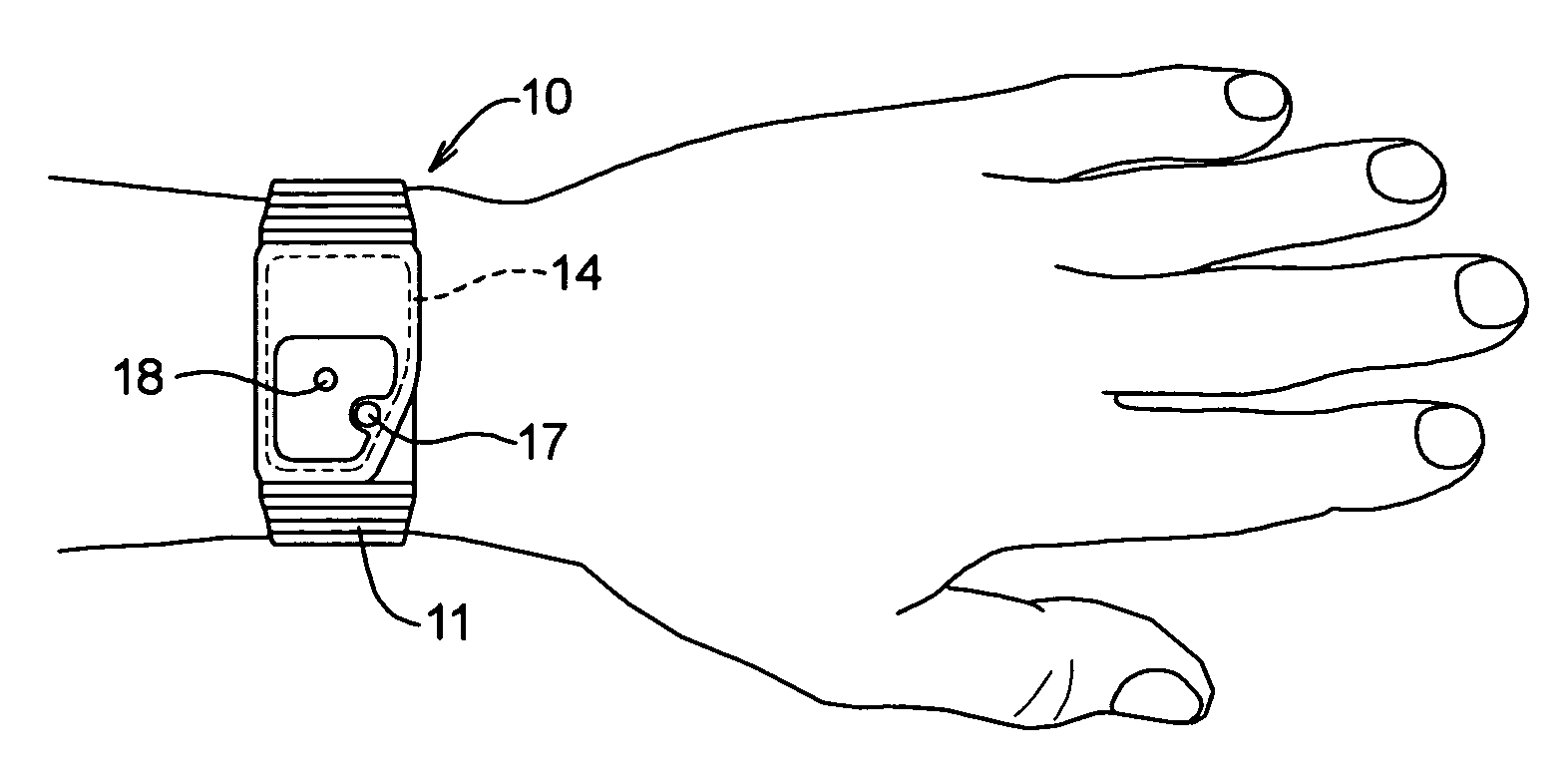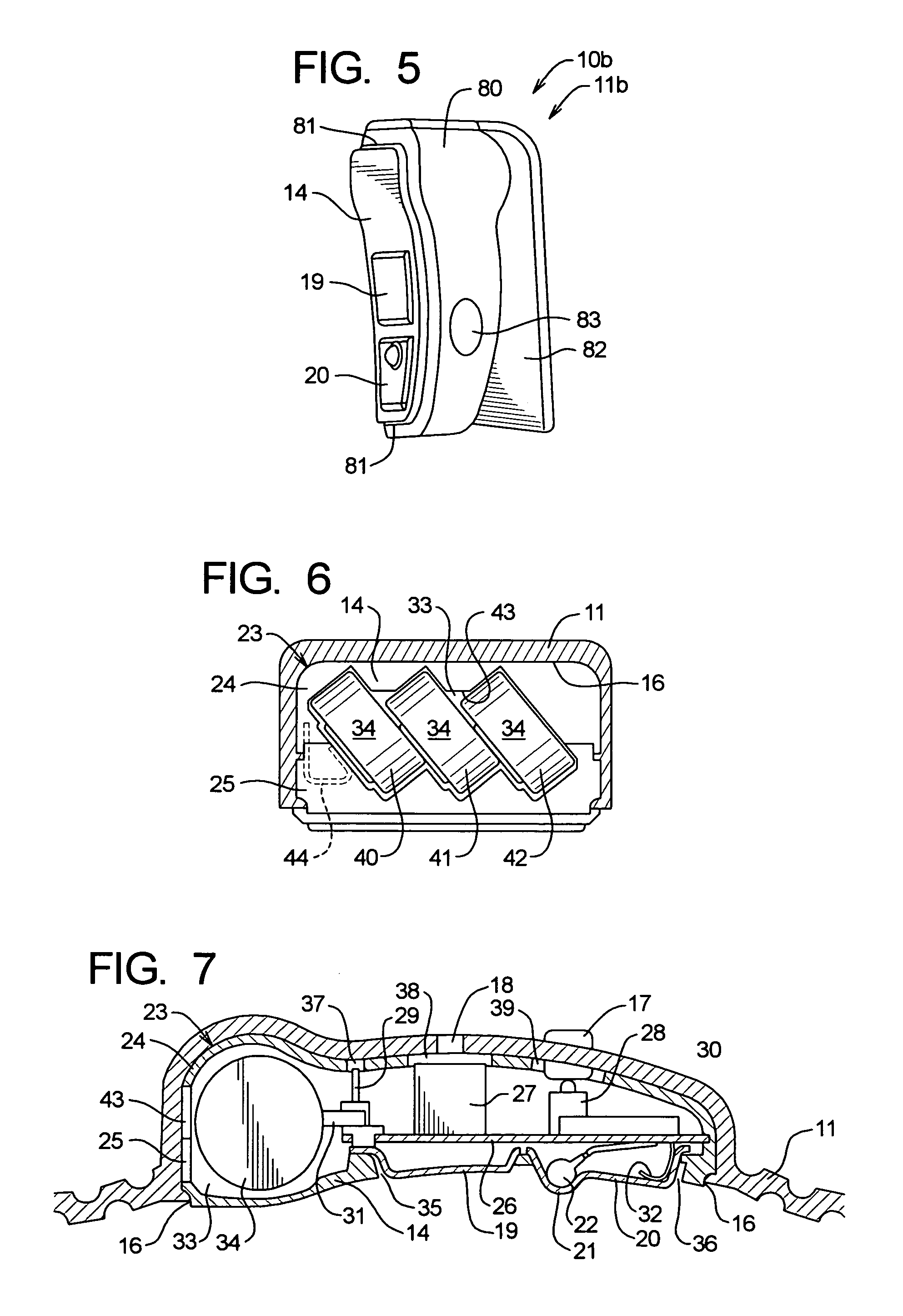Over a period of hours, declining blood glucose concentration may ultimately affect the brain and lead to neuroglycopenic symptoms such as dizziness, impaired coordination, mental
confusion, and altered behaviour.
However, cognizance of
adrenergic symptoms may be compromised by diabetic autonomic neuropathy, a nervous disorder that is likely attributable to a combination of factors including high blood glucose and a long duration of diabetes.
However, as the glucose reading derived by the GlucoWatch is not obtained from the blood, the manufacturer of the instrument directs users to confirm readings by glucometer under certain circumstances, such as during a hypoglycemic episode.
A central limitation of methods described by Potts and Tierney is the uncertainty of the subcutaneous glucose reading as electro-osmotically obtained from the
interstitial fluid.
As reported in these FDA SSED publications, individual GlucoWatch readings can differ substantially from concurrently recorded blood glucose values, such individual differences being somewhat unpredictable and necessitating interpretation based on trends and patterns seen with several sequential readings over time.
However, extrapolation of an upcoming value 20 minutes in advance based on uncertain prior values may invalidate the hypoglycemic threshold comparison, and so methods as disclosed by Potts and Tierney require additional temperature and skin
conductivity analyses to either support or reject the comparison result.
Therefore, the protracted
sample processing time of the GlucoWatch also limits the amount of data that may be meaningfully applied to obtain useful predictions of the interstitial glucose.
Further practical limitations of the GlucoWatch include a three-hour warm-up interval following application to the
wrist, which must be completed prior to
initiation of monitoring.
Once monitoring has been initiated, rapid temperature change or excessive
perspiration can cause the GlucoWatch to discard glucose measurements, and if such conditions persist, the GlucoWatch will cease monitoring altogether.
Given that induced
skin irritation may be tolerable for some users, and that inconvenience of a protracted warm-up
delay prior to use may be acceptable, and that removal of hair from the upper limbs is not objectionable, the 12-hour replacement cycle of the disposable hydrogel pad creates a significant economic burden for those desiring or requiring frequent glucose readings on a ongoing basis (Trecroci, D., Diabetes Interview, 11:28–30 (2002)).
Due to performance limitations, side-effects, and unmanageable operating costs, the GlucoWatch may not become widely utilized, particularly for those individuals requiring nocturnal monitoring for hypoglycemic episodes over a lifetime.
However, acceptance of simple
electronic monitors has been limited by their inability to reliably distinguish symptoms of hypoglycemia from ongoing physiological variations not associated with hypoglycemia, or from transient environmental disturbances.
Transient disturbances not associated with any autonomic process, for example air drafts and
body movement, may also result in false alarms if means are not provided to mitigate such
noise sources.
A limitation of devices described by McNamara and Johnson is they do not include automated means to compensate the apparatus for
skin temperature or resistance variations arising from
physiological responses not associated with hypoglycemia.
If the manual threshold adjustments provided are not correctly set by the user, or if changes to the threshold adjustments are not made during the monitoring period to compensate for ongoing and non-symptomatic physiological variation, these devices may not detect an approaching hypoglycemic episode or, conversely, may produce a large number of annoying false alarms.
Given the application of nocturnal monitoring, corrective threshold adjustments by the user are furthermore impractical.
These results demonstrate how preset, non-adaptive thresholds for
skin temperature and resistance in a monitoring device, such as described by McNamara or Johnson, may result in either false positive or false
negative error rates that are unacceptably high, and consequently, such devices are not widely utilized.
A further limitation of inventions as disclosed by McNamara and Johnson is that
DC current is applied to a pair of electrodes to determine the galvanic skin resistance.
As such, inventions disclosed by Ward and McNamara are incapable of compensating for non-symptomatic variations in perspiration, such as increasing perspiration which may be a hypothalamic thermoregulatory response to increasing
core temperature.
Although Johnson discloses manual means for adjusting the perspiration alarm threshold, the invention of Johnson is limited in that it does not automatically compensate for perspiration not associated with hypoglycemia.
Although improved when compared to the devices disclosed by McNamara and Johnson, the personal physiological monitor described by Ward has a number of additional limitations.
Conversely, if the predetermined amount is too small, false alarms may result from non-physiological temperature drops caused by air drafts or unconscious movement of the
wrist to which the invention is applied.
As a result, the temperature reference may be inappropriately modified at a time when the skin temperature has dropped to a level incrementally above, but still not less than, the temperature alarm threshold derived from the reference, potentially resulting in an undetected hypoglycemic event.
Another limitation is that the first temperature reference is obtained immediately upon activating the monitor.
Therefore, if the monitor is activated before
sufficient time has elapsed to allow the device temperature to equilibrate with the skin temperature, an initial temperature reference which is falsely low may be obtained, resulting in reduced ability to detect a drop in skin temperature from the normative basal level.
Similarly, alarms are declared if a single instance of the skin temperature or resistance falls below the corresponding threshold, and so symptom detection can also be easily corrupted by transient disturbances such as air drafts or unconscious movement.
A final and practical limitation of the invention disclosed by Ward is that no means are provided to alert the user that internal batteries which power the monitor are approaching, but have not reached, full
discharge.
Therefore, it may be possible for a user to initially activate the device, but then experience unreliable operation after a few hours of
continuous monitoring.
 Login to View More
Login to View More  Login to View More
Login to View More 


